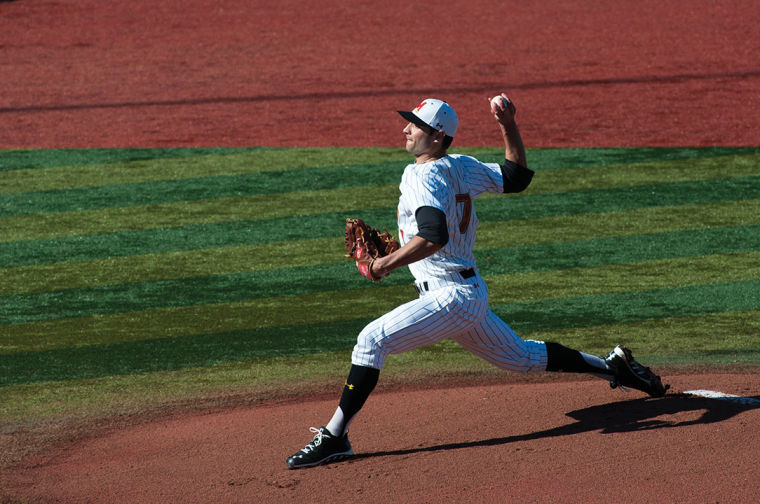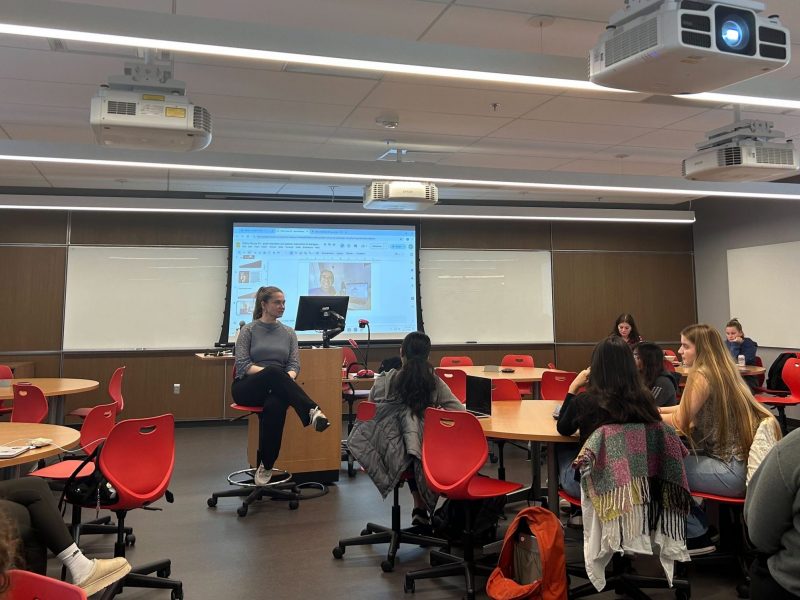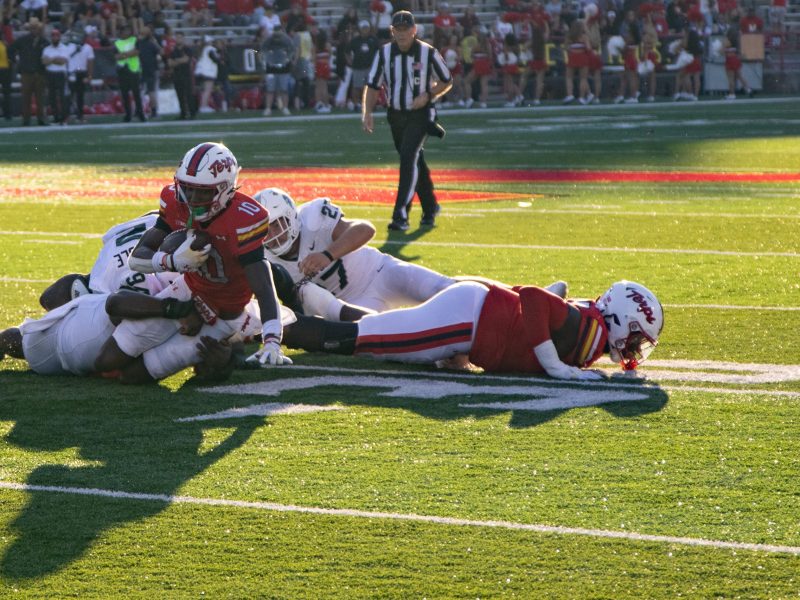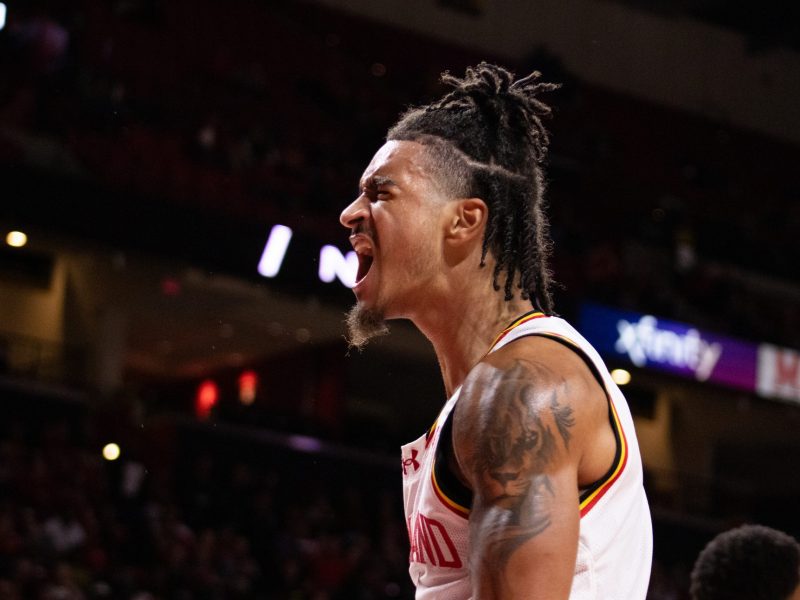
Right-hander Jake Stinnett pitched eight shutout innings of one-hit baseball against Bryant on Feb. 22, 2014.
When a major league baseball team drafts Jake Stinnett this week, he won’t be at his home in Vista, California, following the draft online, like he was last year. Instead, the Terrapins baseball right-hander will be in Charlottesville, Virginia, preparing for or playing in the biggest game of his college career.
The MLB draft begins Thursday, continues Friday and ends Saturday, but Stinnett — the only Terp listed in Baseball America’s top 500 prospects — is focused on the program’s first-ever Super Regional appearance, a best of three series against Virginia that starts Saturday.
This drastic change in Stinnett’s draft day attitude and his surroundings mirrors his drastic improvement as a pitcher and his rise up the draft boards of major league teams. Last June, the Pittsburgh Pirates selected Stinnett in the 29th round. Now, he’s the 67th best prospect, according to Baseball America.
“It’s very, very rare that somebody has that rapid ascension that he does,” said Clint Longenecker, a draft writer at Baseball America. “I really can’t think of someone.”
While former Terps left-hander Jimmy Reed rose 15 rounds in a year — going from a 21st round draft pick to a sixth round selection last summer — Longenecker said Stinnett, a senior, has second-round talent.
Terps pitching coach Jimmy Belanger attributes Stinnett’s positive development to two main factors: increased arm strength and a better slider. During the fall, Belanger forced Stinnett to throw his slider harder and harder until he was comfortable with throwing the pitch regularly.
The increased arm strength occurred naturally as Stinnett developed his own pitching routine, Belanger said. Last year was Stinnett’s first season pitching full-time — he split time between third base and pitcher his first two college seasons.
Belanger said last season Stinnett’s fastball was in the 89-91 miles per hour range, and he’s throwing 92-95 miles per hour fastballs late into the game.
“A lot of guys that will throw 92 to 95 in the first two innings, but by the fifth or sixth inning their velocity drops down to 89-92,” Belanger said. “He’s able to throw some of his best pitches, and his hardest pitches, in the eighth inning.”
The speed of Stinnett’s fastball is his most appealing attribute, according to Longenecker, who watched Stinnett pitch April 4 in a 6-4 loss to Wake Forest.
“What a pro scout is looking for in pitchers, the first thing is really just the fastball and fastball velocity,” Longenecker said. “Another positive attribute he has going for him is the fastball life he gets. … He’s going to be able to get groundballs on the next level because of the life and sink he has on his fastball.”
While Longenecker said Stinnett needs to develop a third quality pitch to succeed at the major league level, his recent commitment to pitching and athleticism work in his favor. Plus, Stinnett is 6-foot-4 and 215 pounds — a prototypical pitcher’s body type.
“When a scout draws up what a pitcher is suppose to look like a lot of the time it’s going to look very similar to Jake Stinnett,” Longenecker said. “He has a great pitching physique.”
Belanger compared Stinnett to Pat Light, another athletic power pitcher who he coached at Monmouth. Light was selected in the first round of the 2009 draft.
“Pat probably had a little bit more velocity than Jake did,” Belanger said. “But Jake, I think, is a better pitcher than he is, like the ability to pitch to both sides of the plate and the slider.”
Stinnett said throughout the year he’s thought about a professional career after he returned to school to improve his draft stock. But when the draft starts, Stinnett won’t be concerned about his draft stock.
He’ll be focused on slowing Virginia’s offense.
“I’ll probably be the last one to know,” Stinnett said. “My main focus is winning the baseball game in Charlottesville. All the other stuff will take care of itself. I can’t really control what’s going to happen.”



